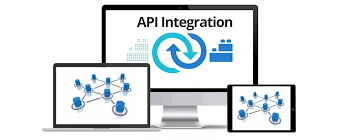Introduction
In the competitive landscape of asset management, organizations constantly seek innovative solutions to streamline operations and improve efficiency. Have you considered how integrating your asset management systems could transform your business? Maximo, a powerful asset management tool developed by IBM, offers extensive capabilities, but its true potential is unlocked when integrated with other platforms. In this article, we’ll explore the benefits of Maximo integrations, real-world applications, and best practices for implementation. By the end, you'll understand how these integrations can help your organization reduce costs, enhance data accuracy, and ultimately drive growth. Ready to take the next step in optimizing your asset management processes? Let’s dive into the world of Maximo integrations and see how they can make a difference for your business.
Understanding Maximo and Its Capabilities
Maximo is IBM's comprehensive asset management software designed to help organizations efficiently manage their physical assets throughout their lifecycle. From tracking maintenance schedules to managing inventory, Maximo provides a robust platform that supports various industries, including manufacturing, healthcare, and utilities.
Core Features of Maximo:
- Asset Tracking: Real-time tracking of assets ensures efficient management.
- Work Order Management: Streamlines the process of scheduling and completing maintenance tasks.
- Inventory Control: Keeps track of inventory levels, helping to reduce waste and improve supply chain efficiency.
- Reporting and Analytics: Provides insights into asset performance, aiding in better decision-making.
While Maximo is powerful on its own, integrating it with other systems—such as ERP solutions, IoT devices, or customer service platforms—can enhance its capabilities. For more on specific integrations.
The Advantages of Maximo Integrations
Integrating Maximo with other platforms brings numerous advantages to organizations looking to enhance their asset management processes. Here are some key benefits:
-
Increased Data Accuracy: Integration reduces manual data entry errors. Data flows seamlessly between systems, ensuring all information is up-to-date and reliable.
-
Real-Time Insights: With integrated systems, organizations gain real-time visibility into asset performance and operational metrics, enabling quicker and more informed decision-making.
-
Improved Efficiency: Automated workflows resulting from integrations lead to faster task completion. For example, when a maintenance request is generated in Maximo, it can automatically trigger related workflows in other systems, such as inventory checks or service scheduling.
-
Cost Savings: Streamlined processes and reduced errors can lead to significant cost savings. Automated alerts for maintenance can prevent costly equipment failures and unscheduled downtime.
-
Enhanced Scalability: As your organization grows, so do your operational needs. Integrating Maximo with other platforms provides the flexibility to scale operations without the need for a complete system overhaul.
Real-World Applications of Maximo Integrations
Maximo integrations can be applied in various industries, addressing specific challenges and enhancing operational efficiency. Here are a few examples:
1. Manufacturing
In the manufacturing sector, companies often integrate Maximo with ERP systems to improve inventory management and production scheduling. This integration helps ensure that materials are available when needed, reducing delays and maintaining production flow.
2. Healthcare
Hospitals use Maximo integrations to manage medical equipment efficiently. By connecting with IoT devices, healthcare facilities can monitor equipment conditions in real-time. This allows for timely maintenance, ensuring that critical equipment remains operational and ready for use.
3. Utilities
Utility companies benefit from integrating Maximo with GIS systems. This combination provides real-time visibility into asset locations and conditions, enabling quicker response times during outages or maintenance tasks.
Best Practices for Implementing Maximo Integrations
To achieve successful Maximo integrations, organizations should follow these best practices:
1. Set Clear Goals
Before embarking on the integration journey, it's essential to define clear objectives. What challenges are you aiming to address? Knowing your goals will guide the entire integration process.
2. Choose the Right Tools
Select integration tools that best meet your organizational needs. Ensure that these tools offer the flexibility and features necessary to facilitate smooth connections between Maximo and other systems.
3. Involve Key Stakeholders
Engage stakeholders from different departments early in the integration process. Their input can help identify requirements and potential challenges, fostering collaboration and support for the integration effort.
4. Thorough Testing
Before going live, conduct comprehensive testing to ensure everything works as intended. Identify and resolve any issues beforehand to minimize disruptions to your business operations.
5. Monitor and Optimize
After implementation, continuously monitor the integration’s performance. Look for areas of improvement and make adjustments as necessary to maximize the benefits of your Maximo integrations.
Conclusion
Maximo integrations provide organizations with a powerful means to enhance their asset management capabilities and drive operational efficiency. By connecting Maximo with other systems, businesses can achieve improved data accuracy, real-time insights, and significant cost savings. As industries evolve, leveraging the right integrations will be essential for staying competitive and agile. Whether you're in manufacturing, healthcare, or utilities, understanding and implementing Maximo integrations can propel your organization toward greater success. To explore more about Maximo integrations and how they can specifically benefit your operations, visit https://www.makini.io/integrations/maximo and discover the transformative potential of integrating Maximo into your asset management strategy.



